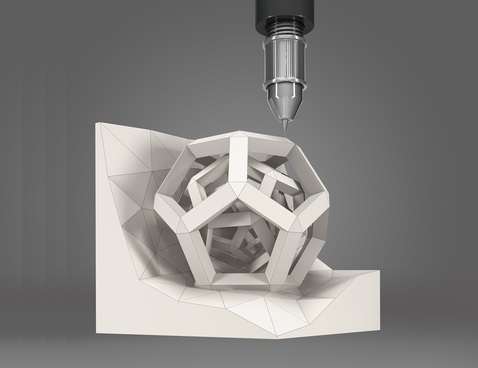Canon Unveils Its View Of The Future Of Printing

Canon shows off its wide range of 3D and 2.5D ‘textured’ printing
3D printing has taken the world by storm over the past few years, as companies and people try to work out how to integrate such a game-changing technology in their work and personal lives.
From manufacturing to food production, the benefits have been hypothesised for a wide range of sectors, but what of the actual technology behind it?
Canon has been one of the leading names in the printing industry for years, and this week hosted its Canon Expo show in Paris, held once every five years to showcase the company’s brightest and most innovative advances, with 3D printing playing a key role. But this was not the only new form of printing that Canon had to demonstrate.
Benefits
Canon realised several years back that 3D printing could have a significant effect, and so partnered with specialists 3D Systems earlier this year to spearhead its operations in Europe. And although it has not released any commercial products so far, 3D printing is an important part of the company’s strategy going forward.
The enthusiasm for the technology at Canon Expo was palpable, with the 3D printing stand consistently the busiest on the entire show floor, and the topic was raised in the keynote speech from Canon’s European president Rokus van Iperen.
Estimating that the 3D printing market will be worth around €3 billion by 2018, van Iperen highlighted that huge new demand for the technology would be fuelled by awareness of the ‘sizeable benefits’ it brings, such as the quick building of complex parts and easy customisation.
However instead of going for the potentially lucrative consumer market, van Iperen said that Canon’s focus would be on professional and industrial applications, as the company looks to tap into the huge range of possible use cases in sectors such as manufacturing and engineering. This was certainly the impression on the 3D printing stand at the show, which highlighted several examples of printed factory machinery, as well as light-hearted items such as a 3D-printed replica of the Webb Ellis trophy (pictured left).
Touchy-feely
Away from 3D printing, Canon also demonstrated another innovative form of printing which is also sure to raise curiosity.
 Textured printing (also known as ‘2.5D printing’) is a new form of producing images that are elevated from a level surface, giving a slightly more realistic or immersive edge to what otherwise would just be a flat image. This is done with high-sensitivity cameras which are able to detect and capture the elevation and texture of objects, allowing for higher amounts of realism that ever before.
Textured printing (also known as ‘2.5D printing’) is a new form of producing images that are elevated from a level surface, giving a slightly more realistic or immersive edge to what otherwise would just be a flat image. This is done with high-sensitivity cameras which are able to detect and capture the elevation and texture of objects, allowing for higher amounts of realism that ever before.
Canon showed off a whole gallery of images that showed slightly raised areas to draw the viewer in to the picture, such as a sprinting runner which look like it was about to spring out of the frame (pictured left), or a family portrait whose members looked far more involved by almost bursting out of the picture.
Canon says that it is able to print in a wide range of texture effects, including leather, sand and even metal, which could provide low-cost but still durable and stylish coverings for all kinds of products.
The technology is even able to reproduce the effects of an oil painting, as Canon demonstrated its version of several classic artworks, including Vermeer’s Girl With A Pearl Earring and Rembrandt’s Self Portrait. The effect is somewhat uncanny, but could lead to the development of greater and more effective methods of preserving old works which otherwise could be damaged by being on public display.
So it seems like the future of printing could be about to get a little bit more touch-friendly, as Canon hopes to lead the way in developing and promoting 3D printing technology and also driving on more nuanced areas such as 2.5D.